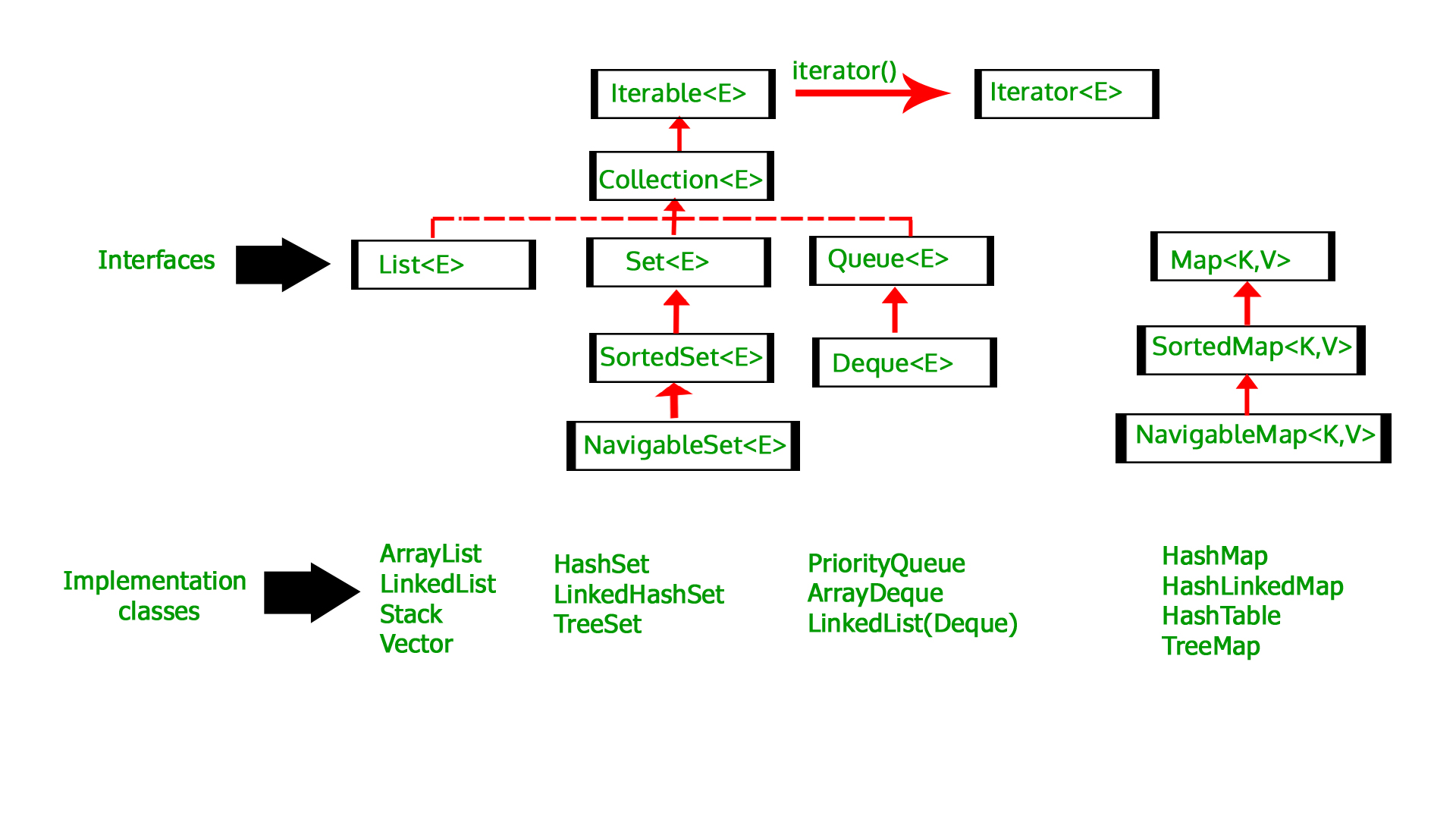PizzaStack.github.io
Collections API
Java provides the Collection interface which provides a framework for several diffrent containers which will be disscussed below. All interfaces except Map share Collection as their superinterface.
-
List is an ordered collection of elements. A user has the ability to place an element anywhere in the list. The elements are accessable by their index. Unlike Set, List typically allows for duplicate elements such that element1.equals(element2). In addition to duplicates, List allow for multiple null elements to be stored.
-
Set is a collection of non duplicate elements meaning there will never exist a situation where element1.equals(element2). In addition to this, it is implied that there can only exist one null element due to the no duplicates rule.
-
Queue is a collection of elements who in essence cannot be iterated, instead the Queue follows the FIFO (First In First Out) rule. When an element is added to the Queue it is placed at the back and when an element is pulled it is pulled from the from the front (index :0).
-
Deque extends Queue but augments the ability to insert and remove elements at either end. The name is short for “Double Ended Queue” and is pronounced “Deck”.
-
Map is an interface which stores data with a key. A map cannot contain duplicate keys; each key can map to at most one value. Map can be visualized like a dictionary where only one word is paired with one definition.
Example Implementations
ArrayList extends AbstractList and implements List (among others). ArrayList provides a dynamic array implementation. ArrayList has a dynimic capacity which is resized when the user fills the container. At all times the ArrayList capacity will be either larger or the same size as the number of elements it contians.
HashSet extends AbstractSet and implements Set (among others). HashSet implements the Set interface which organizes elemts based on a hash map. Due to the hash map, there is no guananteed order of iteration.
TreeSet extends AbstractSet and implements NavigableSet. Elements in the set are ordered using natural ordering (sorted and ascending order). TreeSet does not preserve the insertion order of elements but elements are sorted by keys. Alternatively, a Comparator can be passed in the constructor to achieve other orderings. Elements in a TreeSet must be homogenous and comparable with the default sorting or else a runtime ClassCastException will occur. TreeSet is essentially an implementation of a self-balancing binary search tree.
LinkedList extends AbstractSequentialList and implements List and Deque (among others). LinkedList is implemented using a doubly-linked list (meaning it is iterable both forward and backwards).
HashMap is an implementation of the Map interface. This container allows for both null keys and elements. Unlike the Map keys are generated using a hashing algorithm.
Hashtable maps keys to values. Any non-null object can be used as a key or as a value. To successfully store and retrieve objects from a hashtable, the objects used as keys must implement the hashCode method and the equals method. The HashMap class is roughly equivalent to Hashtable, except that it is non synchronized and permits nulls. (HashMap allows null values as key and value whereas Hashtable doesn’t allow nulls).
